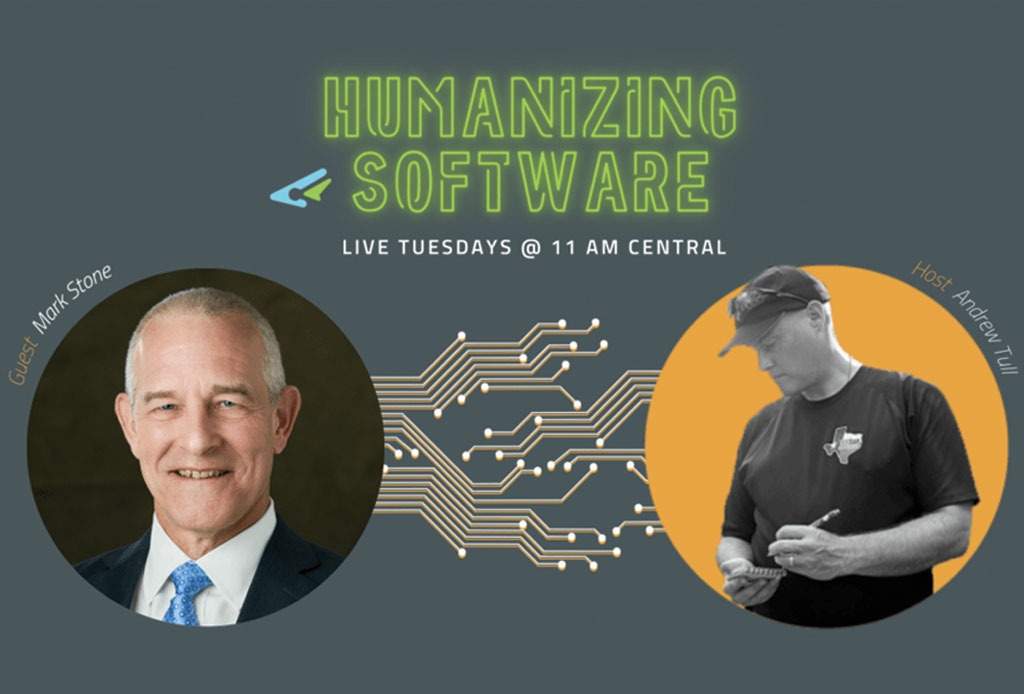Dr. Mark A. Stone, System Chief Information Officer (SCIO) of Texas A&M University System (TAMUS), was our guest of Humanizing Software where we explore how software can support humans. Since 2013, Dr. Stone has been responsible for cybersecurity, networking, and infrastructure, as well as collaborating with tech and non-tech leaders to ensure TAMUS systems support the goals initiated by the Chancellor. It was a pleasure to speak with Dr. Stone about his people-based approach within EdTech.
“How Can I Help?”
Dr. Stone spent about a third of his career in non-IT roles such as finance, merchandise planning, and operations making his background more people-focused than many other IT leaders. This unique experience, mostly in front of people, required that he learn how to serve and mentor which gave him an edge on what is known as “soft skills” or the need for IT leaders to be more people-driven.
Between transitioning from Zale Corp. to Safety-Kleen, Dr. Stone learned to create his brand, build a strong network by paying it forward, and invest in mentoring and career counseling. “Wherever they go, those you help will sing your praises,” Dr. Stone says. Mentees of Dr. Stone (and those that practice a pay-it-forward network) are willing to pay back the generosity shown to them. “My current job is a direct result of someone I helped who subsequently introduced me to my current employer.”
Humanzing Software
As SCIO of TAMUS, Dr. Stone follows a servant leader-based model which influences how he strives to improve the experiences of interacting with software. TAMUS is one of the largest systems of higher education in the nation, with a statewide network of 11 universities, eight state agencies, and a System administration office. A&M System universities educate over 152,000 students and make more than 24 million additional educational contacts through service and outreach programs each year. With more than 26,000 faculty and staff positions, the A&M System has a physical presence in 250 of the state’s 254 counties and a programmatic presence in every county. As the CIO of TAMUS, Dr. Stone’s goal is to incorporate ways of making administrative and academic systems user-friendly, improving the quality of one’s life, and solving real world problems faced by students, faculty, and staff.
TAMUS has been very successful in implementing administrative systems (e.g., Workday, Concur, Purchasing, Grants Management) that allow staff, faculty, and students to have a single, user-friendly software solution that can be accessed through mobile devices. TAMUS faces a larger challenge given that the eleven institutions of the A&M System have chosen to utilize eleven different instances of a student information system. The high cost and low return on investment in consolidating eleven instances to a single, common instance, has necessitated that these institutions add or bolt on additional software tools to their core student information systems. The goal of these extensions are to meet the demand of 18-22 year-old students who have grown up in a digital age and who are used to simplistic, mobile-centric software solutions. They desire to have a single application where they can add or drop classes, get their grades, and contact professors.
Dr. Stone is hopeful that all future administrative and academic systems will make the life of students, faculty, and staff easier. “All of our applications have to be very human-centric for these applications to work and to meet the expectations of the users,” he says.
Watch Humanizing Software Ep 12. With Dr. Mark A. Stone
See how Dr. Stone plans to simplify software for students, faculty, and staff with host Andrew Tull in their conversation about human-driven technology on the Humanizing Software podcast!
